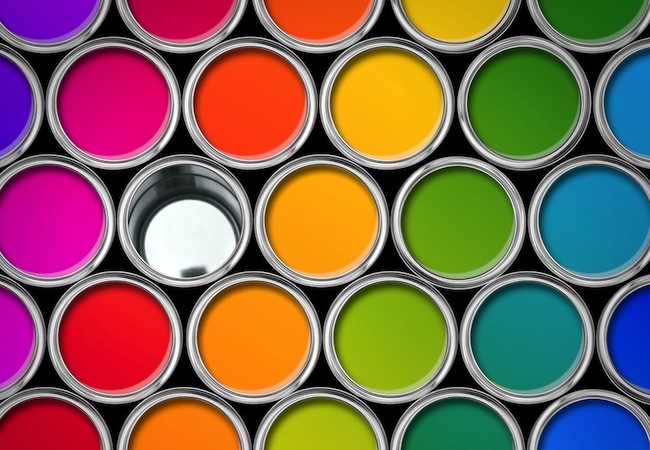We may earn revenue from the products available on this page and participate in affiliate programs. Learn More ›
In her new book, Black & White (and a Bit in Between), designer Celerie Kemble reviews the classic appeal of black and white, and explains why she believes the combination holds such enormous potential for interior spaces.
“It’s a color pairing that is easily adaptable,” Celerie said recently, “one that you can add to or subtract from over time while still keep everything cohesive. And, in a room decorated in black and white, the introduction of any other element—gilt finishes, wood tones, and, especially color—becomes a dramatic accent.”
Black & White highlights the work of Kemble Interiors and other acclaimed interior designers, and the pages are infused with anecdotes and advice, like Celerie’s foolproof tips for choosing a paint finish, included below:
FLAT
pros: Because it reflects little light, a flat finish is good for concealing imperfections and has a classic old-world feel.
cons: Arguably the most delicate of the bunch, flat-finish paint is difficult to clean and will show every scuff and fingerprint.
where to use it: A low-traffic area, or on the ceiling.
EGGSHELL
pros: This has some of the lowsheen qualities of a flat finish, but is a bit easier to care for.
cons: It’s still difficult to clean and marks easily.
where to use it: Almost any room, barring kid-heavy zones.
SEMI-GLOSS
pros: Reflects a significant amount of light and is easy to clean.
cons: Reveals every imperfection in your walls, every brushstroke, and the frequent “orange-peel finish” of a roller brush.
where to use it: It’s ideal for doors, trim, casework, bathrooms, and kitchens. Make sure walls get a good skim coat first.
VENETIAN PLASTER
pros: Often thought of as an old-school finish, if done in the right pigments and gloss, it can look modern and sleek. Wears well because the tinting runs through, so scratches and dings don’t show. Higher gloss finishes wipe clean.
cons: Labor intensive; best left to a professional. More difficult to paint over.
where to use it: Anywhere you want a finish so special and deep, it elevates the very integrity of your wall.
HIGH-GLOSS
pros: A spectacular finish in rooms that are flawlessly skim coated. Less expensive than real lacquer (sometimes I can’t tell the difference).
cons: Expensive to execute well. This looks best lightly sanded between coats, and often requires six or seven turns with the brush to achieve an ideal, lacquer-like finish. The prices of the darker colors can be shocking.
where to use it: Rooms that beg for drama and need to be set apart with almost special-occasion distinction such as dining rooms, entry halls, powder rooms, and libraries.
Reprinted from Black and White (and a Bit in Between) by Celerie Kemble. Copyright © 2011. Published by Clarkson Potter, a division of Random House, Inc.

